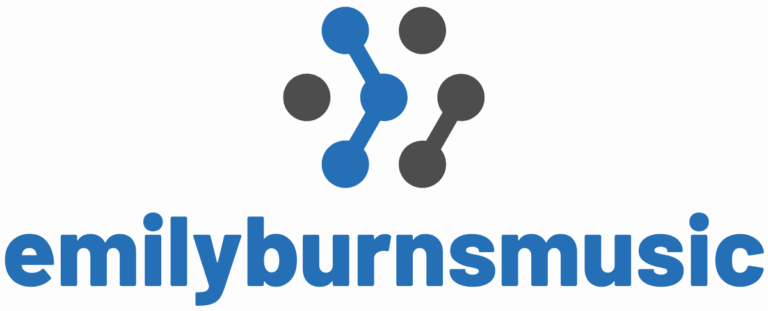In a world overflowing with information, finding the right content can feel like searching for a needle in a haystack—if that haystack were on fire and the needle was also running away. Enter automated content curation, the superhero of the digital age. This technology swoops in to save the day, sifting through mountains of data to deliver the gems that truly matter.
Table of Contents
ToggleOverview of Automated Content Curation
Automated content curation functions as a method for sorting and displaying information by leveraging advanced algorithms and technologies. This tool efficiently processes large data sets, identifying and highlighting essential content based on specific user preferences and trending topics.
Content curation tools analyze various sources, including blogs, news articles, social media posts, and more. These tools deliver tailored content, ensuring users receive relevant information without having to sift through heaps of data manually.
Key benefits of automated content curation include time savings and targeted delivery. Users save hours, as curation tools streamline the research and information-gathering process. Targeted delivery enhances user engagement by connecting audiences with subjects they find interesting or valuable.
Top platforms widely recognized for their automated curation capabilities include Google Alerts, Feedly, and Scoop.it. These platforms allow users to set preferences and receive curated content customized to their interests and needs.
Moreover, automated content curation improves content marketing strategies. Businesses utilize curated content to enhance audience engagement, establish authority, and drive traffic to their websites. By sharing relevant articles and insights, they position themselves as thought leaders within their industries.
Continually evolving technologies, including machine learning and artificial intelligence, enhance the accuracy of curation. These advancements enable tools to learn from user interactions, thereby refining content suggestions over time. As a result, automated content curation presents a smart solution for navigating the overwhelming volume of information in today’s digital landscape.
Benefits of Automated Content Curation

Automated content curation offers significant advantages in managing information overload. Users gain access to relevant content quickly, enhancing their efficiency and effectiveness in content consumption.
Time Efficiency
Time efficiency stands out as a primary benefit of automated content curation. Users avoid the tedious task of manual searches by relying on curated content that arrives directly in their inboxes. With algorithms sorting through vast data sets, key articles and updates emerge without unnecessary delays. Organizations also experience enhanced productivity, enabling teams to focus on strategic tasks rather than information gathering. Users can receive tailored content based on interests, ensuring that only pertinent information takes priority.
Consistent Quality
Consistent quality plays a crucial role in automated content curation. Algorithms continuously analyze multiple sources to ensure that only valuable content gets highlighted. By filtering out irrelevant or subpar information, curated content maintains a high standard, which boosts user trust. Each curation process leverages trending topics and user preferences to deliver timely and accurate information. This reliability helps organizations stay informed and positioned as industry leaders. Enhanced engagement stems from the assured quality of content, fostering stronger connections with audiences.
Tools and Platforms for Automated Content Curation
Automated content curation tools play a crucial role in managing information overload by streamlining the content discovery process. Several platforms help users find relevant and impactful content effectively.
Popular Tools
Google Alerts notifies users of new content based on specified keywords, facilitating timely updates in their areas of interest. Feedly simplifies content aggregation from various sources, enabling personalized feeds that highlight significant updates for users. Scoop.it provides a visually appealing method for content sharing and curation, allowing users to build curated themes easily. Curata offers robust analytics, helping organizations measure the effectiveness of their curated content in achieving marketing goals. Pocket enables users to save content for later reading, ensuring valuable resources remain accessible at any time.
Comparison of Features
Each tool comes with unique features tailored to specific needs. Google Alerts excels in keyword-based updates, while Feedly supports integration with multiple RSS feeds. Scoop.it allows for collaborative curation, enhancing social sharing. Curata’s analytics support data-driven decisions, making it ideal for businesses tracking content performance. Pocket stands out with its offline access capability, ensuring users can read saved articles without an internet connection. These varied features empower users to select the best tools that align with their content curation goals.
Challenges in Automated Content Curation
Automated content curation faces multiple challenges that affect its effectiveness and user satisfaction. Content relevance and accuracy of automation play significant roles in the success of these tools.
Content Relevance
Ensuring content relevance remains a persistent challenge in automated curation. Algorithms often struggle to accurately discern what is truly pertinent to users. For instance, user interests may evolve over time, yet many platforms don’t adapt quickly enough. An example includes articles that miss the mark as trends shift. Maintaining user engagement relies heavily on continually offering pertinent content. Categories and tags in algorithms are crucial yet sometimes misaligned with user intent. Integration of real-time feedback from users could help prioritize the most relevant information.
Accuracy of Automation
Achieving the accuracy of automation is vital for effective content curation. Algorithms can misinterpret information, leading to the inclusion of inaccurate or inappropriate content. Discrepancies may arise from relying solely on data sources without human oversight, thus compromising quality. Users often find themselves sifting through irrelevant results, diminishing trust in automated systems. Regular updates and improvements to algorithms are essential to enhance accuracy. Training datasets should encompass a wide range of sources to further minimize bias and improve relevance. ومعAdvanced machine learning techniques can significantly bolster automation accuracy, resulting in better-curated content experiences.
Future Trends in Automated Content Curation
Emerging trends are set to redefine automated content curation. Personalization will become increasingly sophisticated, enabling algorithms to tailor content even more closely to individual user preferences. Enhanced data analytics will facilitate deeper insights into user behavior, allowing for more dynamic content suggestions.
Artificial intelligence (AI) advancements will significantly improve curation accuracy. These developments will lead to more context-aware algorithms, resulting in a better understanding of nuanced user queries. User feedback will also play a vital role; integrating real-time responses will enhance algorithm performance and relevancy.
Additionally, the growth of visual and multimedia content will shape curation strategies. Content curation tools will adapt to prioritize videos, infographics, and podcasts, reflecting shifting user engagement patterns. As media consumption trends evolve, curators will need to adjust their approaches to include diverse content formats.
Cross-platform integration is on the rise, too. Tools will increasingly enable seamless content sharing across various channels, making it easier for users to discover and engage with curated content. Organizations will benefit from an interconnected ecosystem that enhances user experience.
Emerging ethical considerations will also influence automated curation. Greater awareness of misinformation has led to a push for transparency in how algorithms function. Users are demanding clarity about content sourcing and selection criteria to foster trust and credibility.
Lastly, collaborative curation is gaining traction. Teams are leveraging multiple perspectives to enrich content selection, resulting in a more comprehensive view of trending topics. This collaborative approach enhances the depth and quality of curated content, further engaging audiences.
Automation continues to evolve rapidly, and monitoring these trends will prove crucial in navigating the future of content curation.
Automated content curation is revolutionizing the way individuals and businesses manage information in a fast-paced digital world. By harnessing advanced algorithms and technologies, it effectively filters and delivers relevant content tailored to user preferences. This not only saves time but also enhances engagement by ensuring that users receive high-quality information without the hassle of manual searches.
As technology continues to evolve, the future of automated content curation looks promising. With advancements in artificial intelligence and data analytics, personalization will reach new heights, improving curation accuracy and user satisfaction. Embracing these tools will empower users to navigate the overwhelming sea of information with confidence and ease.




